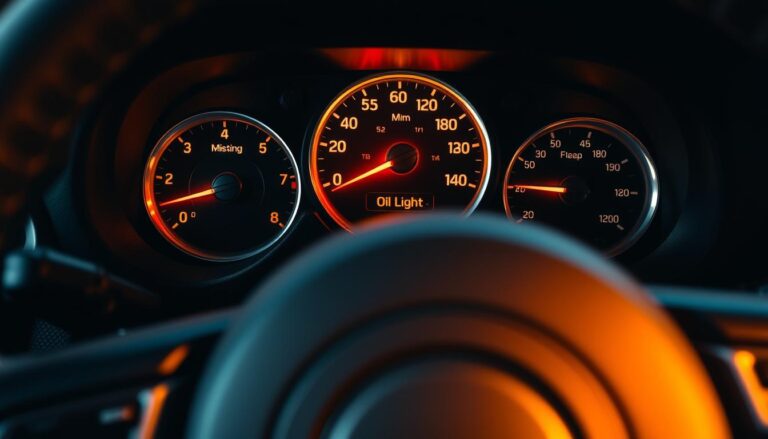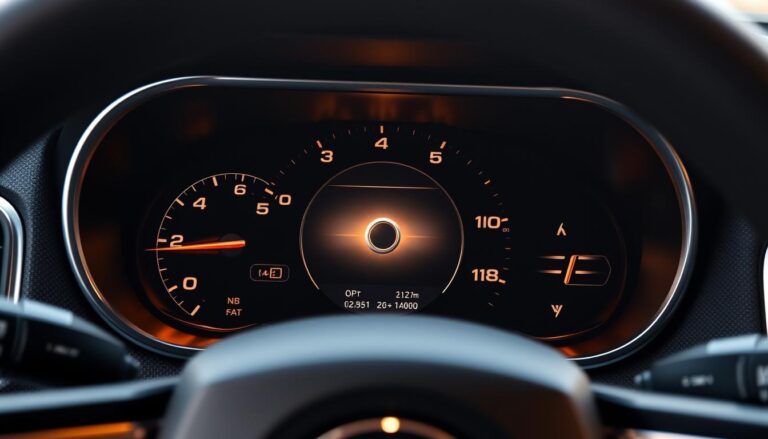The Jeep Grand Cherokee is a popular SUV known for its ruggedness and versatility. One of the essential features of any vehicle is the parking brake, which ensures safety when parked on inclines or declines. Understanding the parking brake location on your Jeep Grand Cherokee is crucial for safe and effective operation.
For Jeep Grand Cherokee owners, knowing how to engage and disengage the parking brake is vital. This article will provide an overview of the parking brake on the Jeep Grand Cherokee, including its location and functionality.
Key Takeaways
- Understanding the parking brake’s location on your Jeep Grand Cherokee.
- Learning how to properly engage and disengage the parking brake.
- The importance of the parking brake for safe vehicle operation.
- Tips for troubleshooting common parking brake issues.
- Best practices for maintaining your Jeep Grand Cherokee’s parking brake.
The Evolution of Parking Brake Systems in Jeep Grand Cherokee
The parking brake system in the Jeep Grand Cherokee has a rich history, marked by a transition from traditional mechanical systems to more advanced electronic controls. Understanding this evolution provides insight into the development of safer and more efficient braking technologies.
Traditional Mechanical Systems (1993-2010)
From 1993 to 2010, the Jeep Grand Cherokee utilized traditional mechanical parking brake systems. These systems relied on cables and levers to engage the brake, requiring manual operation by the driver. The mechanical system was straightforward but had limitations in terms of reliability and maintenance.
| Model Years | Parking Brake System | Key Features |
|---|---|---|
| 1993-2010 | Mechanical | Cable-operated, manual engagement |
Transition to Electronic Parking Brakes (2011-Present)
In 2011, Jeep transitioned to electronic parking brake systems in the Grand Cherokee. This change brought several advantages, including improved reliability, reduced maintenance, and enhanced safety features such as automatic release when the vehicle is put into gear.
The shift to electronic systems reflects the broader automotive industry’s move towards more sophisticated and user-friendly technologies. This evolution has contributed to a better driving experience and improved safety standards.
Where is the Parking Brake on a Jeep Grand Cherokee
Understanding the location of the parking brake in your Jeep Grand Cherokee is crucial for safe and effective operation. The parking brake is a vital safety feature that helps prevent your vehicle from rolling when stopped on an incline or when you’re exiting the vehicle.
WK2 Models (2011-2021)
In the WK2 models of the Jeep Grand Cherokee, which were produced from 2011 to 2021, the parking brake is located on the center console between the front seats. To engage the parking brake, you simply pull up the lever.

This manual lever is designed to be intuitive and easy to use, even when you’re in a hurry. It’s a mechanical system that doesn’t require any complex operations.
WL Models (2022+)
For the newer WL models, produced from 2022 onwards, Jeep introduced an electronic parking brake. Instead of a manual lever, you’ll find a button on the center console that controls the parking brake.
| Model | Parking Brake Type | Location |
|---|---|---|
| WK2 (2011-2021) | Manual Lever | Center Console |
| WL (2022+) | Electronic Button | Center Console |
Regardless of the model, the parking brake is an essential safety feature that should be used whenever you’re stopped on an incline or need to secure your vehicle. Using the parking brake correctly can help prevent accidents and ensure your safety.
How to Operate the Jeep Grand Cherokee Parking Brake
Understanding how to operate the parking brake on your Jeep Grand Cherokee is crucial for safe vehicle operation. The parking brake is a vital safety feature that ensures your vehicle remains stationary when parked, especially on inclines or declines.
Manual Parking Brake Operation
For older models of the Jeep Grand Cherokee, the parking brake is operated manually. To engage the parking brake, locate the lever between the front seats, pull it upwards until you feel resistance, and it clicks into place. To disengage, pull the lever upwards slightly to release the tension, then push the button on the end of the lever and lower it back down.

Electronic Parking Brake Operation
In newer models, the Jeep Grand Cherokee features an electronic parking brake. To engage the electronic parking brake, simply press the parking brake button, usually located on the center console. You’ll know it’s engaged when the dashboard indicator light comes on. To disengage, press the brake pedal and then release the parking brake button.
Auto-Hold Feature Functionality
The auto-hold feature, available in some Jeep Grand Cherokee models, automatically engages the brakes when the vehicle comes to a stop, enhancing safety. This feature is particularly useful in heavy traffic or on steep inclines. To activate it, press the auto-hold button, usually found near the gear selector or on the dashboard.
Operating the parking brake on your Jeep Grand Cherokee, whether manual or electronic, is designed to be straightforward. By following these steps, you can ensure your vehicle’s safety and stability when parked.
Common Issues with Jeep Grand Cherokee Parking Brakes
Understanding the common issues with the parking brake in Jeep Grand Cherokee is crucial for maintaining vehicle safety and performance. The parking brake system, whether mechanical or electronic, can be prone to various problems that may compromise its effectiveness.
Mechanical Failures and Warning Signs
Mechanical failures in the parking brake system can manifest in several ways. Common warning signs include unusual noises when engaging the parking brake, such as grinding or clicking sounds, and a decrease in the brake’s holding capability. Regular inspection can help identify worn-out brake components or misaligned parts.
Some of the mechanical issues that can occur include:
- Cables that are worn or corroded
- Brake shoes or pads that are excessively worn
- Mechanical components that are loose or damaged
| Warning Sign | Possible Cause |
|---|---|
| Grinding noise | Worn brake shoes or pads |
| Clicking sound | Loose or damaged mechanical components |
| Reduced holding capability | Cables that are worn or corroded |
Electronic System Malfunctions and Troubleshooting
Electronic parking brake systems, found in newer Jeep Grand Cherokee models, can also experience malfunctions. Symptoms may include failure to engage or disengage, or error messages on the dashboard. Troubleshooting often involves checking the system’s electrical connections and ensuring that the vehicle’s software is up to date.
Some common issues with electronic parking brakes include faulty control modules, wiring issues, or problems with the brake calipers. It’s essential to consult a professional mechanic for diagnosis and repair, as these systems can be complex.
Safety Considerations and Best Practices
Ensuring safety while operating a Jeep Grand Cherokee involves understanding the proper use of its parking brake. The parking brake is a crucial component that ensures your vehicle’s stability when parked, especially on inclines or difficult terrain.
When to Use Your Parking Brake
It’s essential to use your parking brake every time you park your Jeep Grand Cherokee, regardless of the terrain. Engaging the parking brake helps prevent the vehicle from rolling and reduces the strain on the transmission. For automatic transmissions, it’s recommended to shift into park and engage the parking brake. For manual transmissions, shift into gear and engage the parking brake.
Parking on Inclines and Difficult Terrain
When parking on inclines or difficult terrain, extra caution is necessary. Always engage the parking brake and consider turning your wheels towards the curb or a solid object to prevent rolling. For steep inclines, some Jeep Grand Cherokee models may require additional measures, such as chocking the wheels.
Emergency Brake vs. Parking Brake: Understanding the Difference
Many drivers confuse the emergency brake with the parking brake, but they serve distinct purposes. The parking brake is designed to keep the vehicle stationary when parked, while the emergency brake is intended for use in emergency situations to stop the vehicle quickly. In modern Jeep Grand Cherokee models, the electronic parking brake replaces traditional systems, offering enhanced safety features.
| Safety Feature | Description | Benefit |
|---|---|---|
| Parking Brake | Prevents vehicle from rolling when parked | Enhances safety on inclines and difficult terrain |
| Electronic Parking Brake | Modern system replacing traditional mechanical brakes | Offers enhanced safety features and convenience |
| Proper Wheel Orientation | Turning wheels towards curb or solid object when parked on incline | Prevents vehicle from rolling in case of brake failure |
Maintenance Tips for Your Jeep Grand Cherokee Parking Brake
Proper maintenance of your Jeep Grand Cherokee’s parking brake is crucial for ensuring vehicle safety and preventing potential accidents. A well-maintained parking brake system is essential for the overall reliability and performance of your vehicle.
Regular Inspection Schedule
Regular inspections are vital to identify any wear or potential issues with the parking brake system before they become major problems. It is recommended to inspect the parking brake every 12,000 to 15,000 miles, or as specified in your owner’s manual. During inspection, look for signs of wear on the brake pads, cables, and other components.
| Inspection Interval | Components to Check |
|---|---|
| Every 12,000 to 15,000 miles | Brake pads, cables, and mounting hardware |
| As needed | Brake fluid level, electronic control module |
DIY Maintenance vs. Professional Service
While some maintenance tasks can be performed DIY, such as checking the brake fluid level, more complex tasks like inspecting and replacing brake pads or cables may require professional service. Consider your comfort level and the complexity of the task when deciding between DIY and professional maintenance.
Maintaining your Jeep Grand Cherokee’s parking brake not only ensures safety but also prolongs the lifespan of your vehicle’s braking system. By following a regular inspection schedule and knowing when to seek professional help, you can keep your parking brake in optimal condition.
Conclusion
The Jeep Grand Cherokee parking brake is a critical safety feature that ensures your vehicle remains stationary when parked. Throughout this article, we’ve explored the evolution of parking brake systems in the Jeep Grand Cherokee, from traditional mechanical systems to modern electronic parking brakes.
A summary of Jeep Grand Cherokee parking brake information reveals that the location and operation of the parking brake vary depending on the model year. For WK2 models (2011-2021), the parking brake is typically an electronic system, while earlier models use a manual system. Understanding how to properly operate and maintain your parking brake is essential for safe vehicle operation.
Regular inspection and maintenance of your Jeep Grand Cherokee parking brake can help prevent common issues such as mechanical failures and electronic system malfunctions. By following the tips outlined in this article, you can ensure your parking brake is functioning correctly and enjoy safe and confident driving.
FAQ
Where is the parking brake located on a Jeep Grand Cherokee?
The parking brake location varies depending on the model year. For WK2 models (2011-2021), it’s typically an electronic button, while for WL models (2022+), it’s also an electronic button, but with potentially different functionality.
How do I operate the electronic parking brake on my Jeep Grand Cherokee?
To engage the electronic parking brake, press the button firmly. To release, press the button again while pressing the accelerator or shifting out of park.
What are some common issues with the Jeep Grand Cherokee parking brake?
Common issues include mechanical failures, electronic system malfunctions, and worn-out brake components. Regular inspections can help identify potential problems early.
How often should I inspect my Jeep Grand Cherokee’s parking brake?
It’s recommended to inspect the parking brake every 12,000 to 15,000 miles or during routine maintenance checks.
Can I perform DIY maintenance on my Jeep Grand Cherokee’s parking brake?
While some basic inspections can be done DIY, more complex maintenance and repairs are best left to a professional mechanic to ensure safety and proper function.
What’s the difference between the emergency brake and the parking brake?
The emergency brake is designed for emergency stops, while the parking brake is used to secure the vehicle when parked. In modern Jeep Grand Cherokee models, these functions are often combined into the electronic parking brake system.
How do I use the auto-hold feature on my Jeep Grand Cherokee’s electronic parking brake?
The auto-hold feature automatically engages the parking brake when the vehicle comes to a stop, and releases it when the accelerator is pressed. This feature is typically activated by default, but can be adjusted or turned off through the vehicle’s settings menu.
Are there any specific safety considerations when using the parking brake on a Jeep Grand Cherokee?
Yes, always ensure the parking brake is fully engaged when parked, especially on inclines. Additionally, be aware of the vehicle’s surroundings and use caution when parking on difficult terrain.


